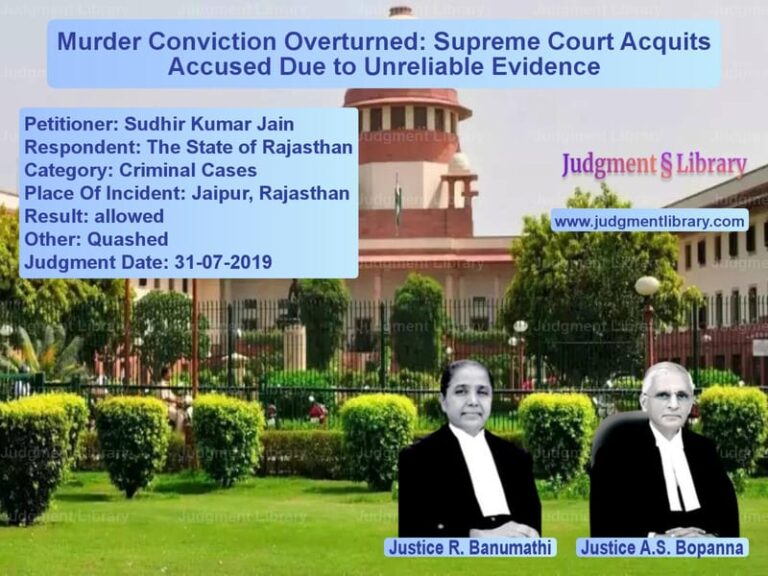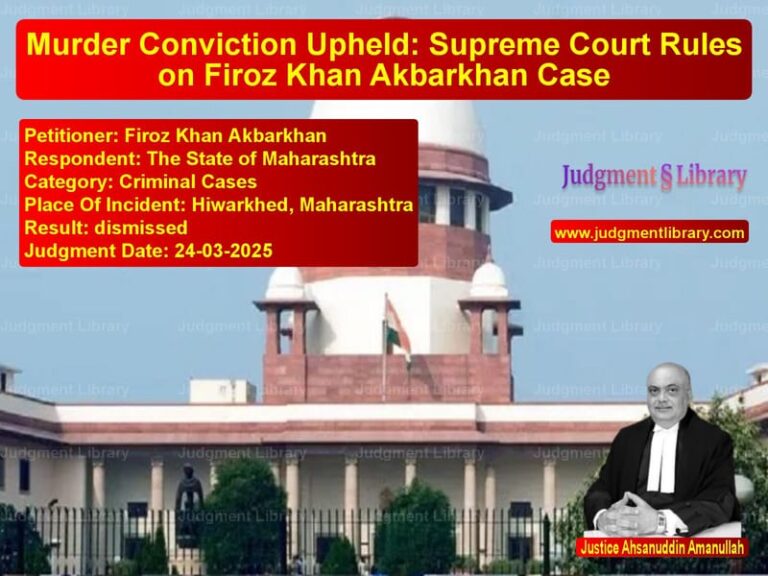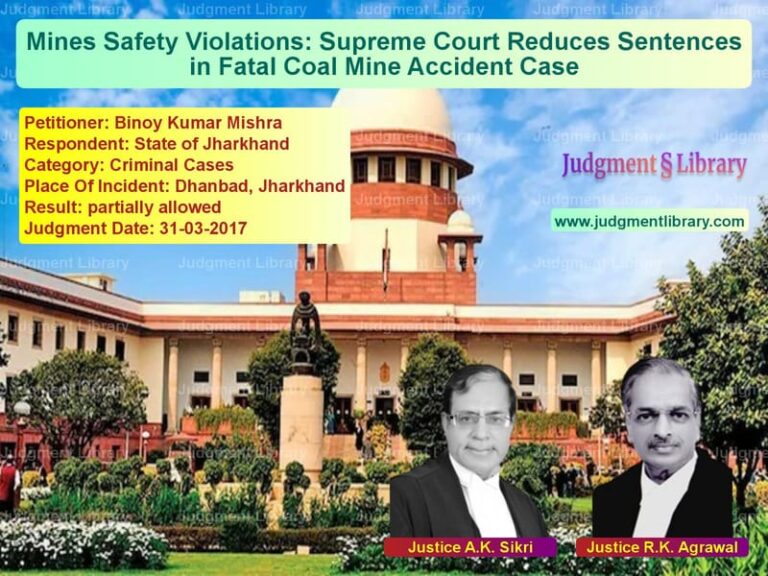Illegal Mining in Karnataka: Supreme Court’s Ruling on Environmental Damage and Regulatory Measures
The Supreme Court of India has once again reinforced its commitment to environmental protection and legal accountability in the case of illegal mining activities in Karnataka. The court has examined large-scale violations in the districts of Bellary, Chitradurga, and Tumkur, where unregulated mining has caused severe environmental degradation.
The case was initiated by the petitioner, Samaj Parivartana Samudaya, through a writ petition in 2009, seeking the court’s intervention against rampant illegal mining operations in Karnataka. Over the years, the Supreme Court has issued multiple directives, including imposing bans, setting production caps, and appointing regulatory bodies like the Central Empowered Committee (CEC) and Karnataka Mining Environment Restoration Corporation (KMERC) to oversee rehabilitation efforts.
Background of the Case
The illegal mining case traces its origins to concerns raised in T.N. Godavarman Thirumalpad v. Union of India & Ors., where the Supreme Court identified widespread unauthorized extraction of iron ore, leading to forest encroachments and loss of natural resources. The Central Empowered Committee (CEC) was formed to monitor and regulate the mining sector.
By 2010, the CEC reported large-scale mining beyond lease boundaries in Karnataka, leading to the Supreme Court ordering a temporary ban on mining in Bellary (July 2011), Chitradurga, and Tumkur (August 2011). The ban was lifted in phases, subject to environmental impact assessments and compliance with the court’s regulations.
Supreme Court’s Key Directives
- Production Caps: The court imposed and later revised production ceilings to prevent excessive mining. As per the latest ruling (26.08.2022), production limits were set at 35 million metric tons (MMT) for Bellary and 15 MMT for Chitradurga and Tumkur.
- Category-Based Mining Classification: The court categorized mines into A, B, and C based on environmental violations. Category C mines, which had the worst violations, were ordered to be auctioned.
- Rehabilitation and Restoration Plans: The court directed mandatory reclamation and rehabilitation (R&R) plans to restore degraded mining areas.
- Oversight Mechanisms: The Supreme Court established a Special Purpose Vehicle (SPV), Karnataka Mining Environment Restoration Corporation (KMERC), to execute environmental restoration projects.
- Joint Team for Boundary Demarcation: The court instructed Karnataka and Andhra Pradesh authorities to form a team to physically survey and demarcate disputed mining lease areas.
Petitioners’ Arguments
The petitioner, Samaj Parivartana Samudaya, argued that unchecked mining in Karnataka had caused irreparable damage to forests, rivers, and local livelihoods. They contended that:
- Mining activities were undertaken without adherence to environmental regulations.
- The sale of illegally extracted iron ore resulted in financial loss to the state.
- Environmental impact assessments were ignored by mining leaseholders.
- There was a lack of governmental oversight in preventing illegal mining.
Respondents’ Arguments
The State of Karnataka and other respondents argued that:
- They had taken measures to curb illegal mining through policy changes.
- Several mines had obtained environmental clearances as required.
- Regulatory frameworks such as the R&R plans were being implemented effectively.
- Existing mining leaseholders had the right to continue operations under legal provisions.
Key Observations by the Supreme Court
The Supreme Court, in its ruling, stated:
“Illegal mining in Karnataka has led to extraordinary and unprecedented plunder of natural wealth. The necessity of regulatory measures is paramount to prevent further environmental degradation.”
The court emphasized the need for scientific mining practices, stating:
“The R&R Plans must ensure environmentally sustainable mining. The total production from all leases must be monitored, and a ceiling should be maintained to prevent over-extraction.”
Final Verdict
The Supreme Court upheld its previous orders regarding production caps and environmental restoration efforts. It further directed:
- A complete review of category-wise mining leases.
- Strict monitoring of environmental impact assessments.
- Continued enforcement of the 10% levy on mining sales for environmental restoration.
- Submission of progress reports on restoration activities within six months.
Impact of the Judgment
The ruling is expected to reinforce environmental governance in mining-affected regions. It highlights the judiciary’s active role in ensuring sustainable mining while balancing economic interests. The verdict mandates continuous oversight to prevent a recurrence of large-scale illegal mining operations.
As mining leaseholders now face stricter compliance obligations, this judgment sets a precedent for future environmental litigation concerning the extraction of natural resources in India.
Petitioner Name: Samaj Parivartana Samudaya.Respondent Name: State of Karnataka & Ors..Judgment By: Justice Sanjiv Khanna, Justice M.M. Sundresh, Justice Bela M. Trivedi.Place Of Incident: Karnataka (Bellary, Chitradurga, Tumkur).Judgment Date: 14-03-2024.
Don’t miss out on the full details! Download the complete judgment in PDF format below and gain valuable insights instantly!
Download Judgment: samaj-parivartana-sa-vs-state-of-karnataka-&-supreme-court-of-india-judgment-dated-14-03-2024.pdf
Directly Download Judgment: Directly download this Judgment
See all petitions in Environmental Cases
See all petitions in Judgment by Sanjiv Khanna
See all petitions in Judgment by M.M. Sundresh
See all petitions in Judgment by Bela M. Trivedi
See all petitions in partially allowed
See all petitions in supreme court of India judgments March 2024
See all petitions in 2024 judgments
See all posts in Environmental Cases Category
See all allowed petitions in Environmental Cases Category
See all Dismissed petitions in Environmental Cases Category
See all partially allowed petitions in Environmental Cases Category







